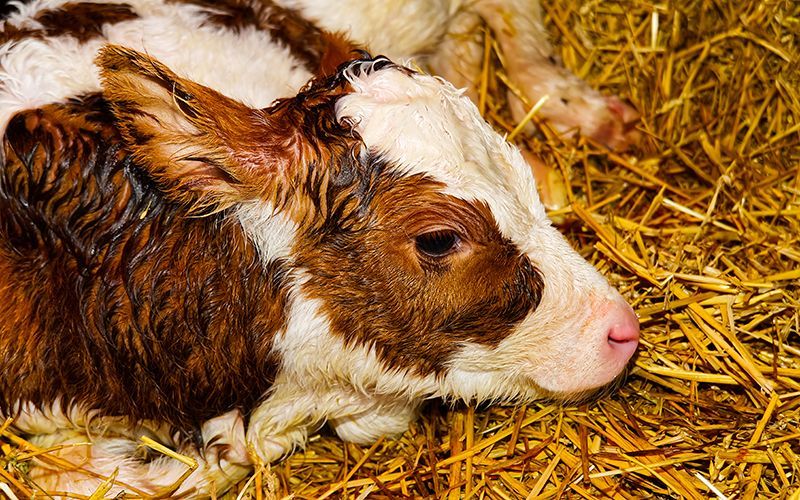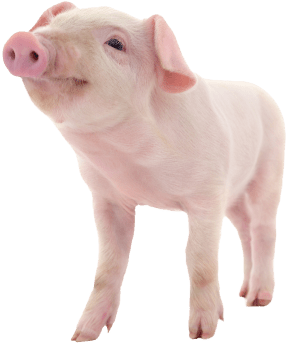
How to Handle Orphaned Calves
|
|
Time to read 8 min
 You are being redirected to QC Supply Pharmacy, where you’ll find a wide selection of high-quality prescription and pharmaceutical products for animals of all sizes.
Enjoy the same great service and expertise you trust from QC Supply.
Click below to continue shopping.
Continue
No thanks, stay on the main site
Powered by
You are being redirected to QC Supply Pharmacy, where you’ll find a wide selection of high-quality prescription and pharmaceutical products for animals of all sizes.
Enjoy the same great service and expertise you trust from QC Supply.
Click below to continue shopping.
Continue
No thanks, stay on the main site
Powered by


|
|
Time to read 8 min
Spring calving brings with it a unique set of challenges, one of those challenges is what to do if you end up with an abandoned or orphaned calf. Many reasons can cause this to happen, from the mother dying at or shortly after birth to behavioral or health issues that prevent the animal from properly mothering the calf. These orphaned livestock are often referred to as bucket or bottle calves.
Regardless of the birth story (or after story), adequate colostrum intake is vital for all newborns. Timing is also important as the calf's ability to absorb colostral antibodies decreases rapidly throughout the first day of life. Plan for calves to receive 5-6% of their body weight in colostrum within the first six hours after birth, then feed colostrum again 12 hours later.
As any farmer or rancher with cattle knows, the worst part of calving season is watching the herd for new births. This is important to ensure proper timing in the event of an orphaned calf. Observe new mothers to see if they nurse their calves; if they refuse or are physically unable to allow nursing, take immediate action to provide colostrum to newborns
Fresh colostrum is best, but in the case of orphaned calves, providing colostrum from another source is critical. If fresh colostrum is not available, the preferred source is frozen colostrum previously harvested from the same herd. If fresh or frozen colostrum is not available, substitute with powdered colostrum. Make sure to have colostrum and newborn feeding supplies on hand before the start of calving season, otherwise, it may be difficult to administer promptly.
Another top priority for calving management is naval care. Apply iodine or a similar topical disinfectant to the umbilical cord of the newborn calf. Observe the naval closely to make sure it dries and heals. Watch for signs of naval ill or infection, such as swelling. These infections are more likely in muddy or wet calving areas. An infected naval will be swollen and may be painful to touch. Treat an infected naval immediately; consult your veterinarian for treatment protocols.
Protect newborn calves from the weather by keeping them in clean, well-ventilated pens and shelter. Calf hutches or barn pens work well, especially when bottle-feeding calves. You will want to keep orphaned calves separate to prevent them from sucking one another and reducing the spread of disease. This also makes it easier to monitor their general health and well-being. Allow 15-20 square feet of barn space for calves with access to an outdoor lot and 20-30 square feet of barn space for those without outdoor lots.
Very young calves raised on bottle or bucket feedings are more vulnerable to predators than heavier, older cattle. Without a close connection to their mother in the herd, they tend to wander from the herd more frequently, leaving them vulnerable to predator attacks. Predators will likely be more attracted to your herd during calving season due to the presence of afterbirth and new calves.
Calves can be weaned at 4-8 weeks of age if the calf is eating well, with more time needed for weaker calves or calves with lower grain intake. Gradually wean the bottle calf (or calves) to reduce stress, and take care to not change up other aspects of the calf's routine when weaning from milk. Make sure your weaning records reflect the correct group status of the calf. It is not fair to compare weaning weights for an orphan calf receiving milk replacer to calves raised by their mother. Most breed associations have special weaning codes to account for this.
Raising a bottle calf takes patience, attention to care, and most importantly, time. But done properly, your bottle calf can be re-introduced to the rest of your herd successfully.
Do you have any tips or tricks for bottle-feeding an orphaned calf? Drop us a note below in the comments section!
The only way to avoid the work of bottle feeding a calf is to get it to successfully graft onto the side of a lactating cow. This also gives the bonus of protecting it from predators. You can choose either a cow in your herd who has lost her calf or one specifically purchased for this purpose.
Start by penning lactating cows and newborn calves separately from the rest of the herd in a space that allows the calf to interact closely with the cow to which the grafting is being attempted. Provide adequate shade, water, and feedstuffs for the cow. For best results, do not bottle feed the calf to satiation immediately before trying to get it to suckle the prospective nurse cow. A tight-bagged (full-uddered) cow and a hungry calf are more likely to result in successful grafting.
When applicable, rub or tie the skinned hide of the nurse cow's dead calf onto the grafted calf to transfer the scent and encourage the cow to accept the calf. Afterbirth and commercial products consisting of synthetic pheromones can also help in grafting. Scents will be helpful in the first 2-3 days, but not much after that. Give the pair time alone to nurse or bond, without human interaction/distraction. Observe from a distance, and check later for signs of nursing like a full belly on the calf of slick teats or reduced udder filling on the cow.
Give the nurse female time to accept the calf without restraint, but do not wait too long for nursing to occur before relying on a restraint. It is critical newborns receive adequate colostrum and nutrients in early life. Also, dehydration is a risk that must be addressed through force-feedings if necessary. If the cow repeatedly kicks at or butts the calf and doesn't allow it to nurse unrestrained, physically restrain the cow in a squeeze chute with the bottom sides removed so the calf can nurse twice a day. Repeat until the cow claims the calf willingly.
If your nurse cow has undergone a difficult birth or is stressed from losing her calf, use extra care in handling her and observe closely for signs of distress or health problems. Even if these stressed cows accept a grafted calf, they may dry off (discontinue lactation) and be unable to support the calf. Do not assume a suckling calf is getting enough nutrients; monitor its weight and condition, and supply additional nutrients where needed.
In the absence of a nurse cow, use a replacer with at least 22% crude protein and 15% fat. Mix with warm water to better dissolve the product and make it more attractive to the calf. If hot water isn't readily available close to the feeding site, use a thermos or other insulated container to transport warm water to the feeding site. Mix when ready to feed. Keep the temperature of the mix consistent between feedings and not more than 100° F. Make sure to use the same amount of milk replacer in the mix for each feeding. Be sure to thoroughly mix the powder and water by stirring or shaking to dissolve all of the powder.
Use separate bottles for each bottle calf to reduce the spread of disease and sanitize all feeding equipment after each meal. Calves will need to be taught to feed from a bottle. Start by inserting one or two fingers into the calf's mouth, and as they begin to suck, replace your fingers with the bottle. it may be necessary to straddle or stand behind the calf to support its head upward while the calf is backed against a solid fence, wall (corner is best), or vehicle. This head position will help close the esophageal groove present in young calves and shunt milk past the rumen and directly to the abomasum/"true stomach" instead.
Lethargic or ill calves may take longer to actively suck a bottle. When possible, spend time to get a calf to start on a bottle before resorting to forced infusion of a feeding liquid. If the calf still refuses, a stomach tube or esophageal feeder can be used to infuse milk replacer directly into the calf's stomach. Take extreme care to ensure the tube is in the esophagus and not the windpipe. Listen to make sure breathing sounds are not coming from the tube.
Sometimes, the infusion of milk replacer into the stomach will stimulate a calf's appetite. Weak calves may require smaller and more frequent feedings. Continue to monitor calves for signs of unthriftiness like poor growth, scours, and a pot-bellied appearance. Have a scour prevention and treatment plan in place based on veterinarian advice.
As the bottle calf becomes used to drinking from the bottle, they may anticipate feedings and aggressively pursue the bottle. These calves become accustomed to humans feeding them. Although bottle calves are often more tame or docile than other calves, you still need to be careful to avoid being head-butted by the calf. A wire bottle holder can be used to attach the bottle to a fence to avoid having to hold the bottle during feedings.
Bucket feeding of milk replacers is also possible, but take precautions to keep calves from stepping in and knocking over the bucket. Make sure the buckets are not too tall for the calves and are secured. Teach the calf to use the bucket in the same fashion as you would a bottle, by dipping two fingers moistened with milk into the calf's mouth. As the calf begins to suck, gently lower its mouth into the bucket of warm milk. Keep its nostrils clear of liquid, and repeat as needed until the calf drinks on its own.
By 3 weeks of age, calves should be able to digest small amounts of solid feeds. Keep feeders at a height where it is easy for calves to reach the feed. Calf starter feeds should be dust-free, highly palatable feeds containing 75-80% total digestible nutrients (TDN), 15-20% crude protein, and adequate minerals and vitamins. They should be coarsely ground, rolled, or pelleted to facilitate feed intake and rumen development. Calves can move to grower rations at around 4 months of age.
After a calf finishes a bottle, put a little of the solid feed in its mouth to encourage feed tasting. Keep small amounts of dry, fresh feed in a feed box or tub. To start, calves will only consume a quarter of a pound of grain per day; increasing to 2-3 pounds by 3 months of age and approximately 3-5 pounds of feed at 6 months of age. Hay or pasture consumption encourages rumen development. Provide limited exposure to green pasture, greenchop, or silage until calves are 6 months of age as excessive feeding of these high-moisture forages to young calves can limit dry matter and nutrient intake.
Did we miss something? Drop it below in the comments section!

